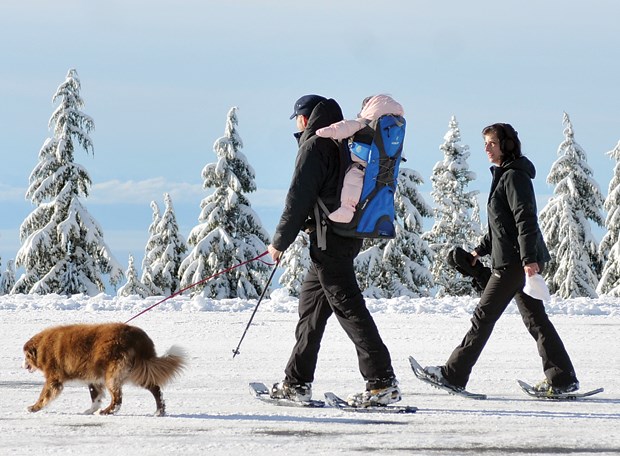Marginal snow and slippery conditions are being blamed for a snowshoer becoming injured and stranded on the trails of Cypress Mountain.
A group of North Shore Rescue teams were paged to the mountainside after dark last Friday (Dec. 11) when a woman in her 30s slipped on a bald patch and twisted her ankle.
“They were stuck about 250 metres below the summit of Hollyburn,” said Doug Pope, North Shore Rescue search manager. “They were stuck and not going anywhere fast.”
Some passersby stopped and helped build a fire to keep the woman warm while she waited for North Shore Rescue team to arrive with a stretcher.
Snow cover on the trail was too deep for hiking boots in some areas and too thin for snowshoes in others, Pope said.
“Snowshoes are best used when there’s lots of snow and it’s not hard and icy. There are times when you just need to stop and take the snowshoes off,” he said. “They’re like little toboggans in the wrong conditions.”
It’s rescue number 116 of an already record-setting year for the team, and it signals the start of a new season of backcountry call-outs for lost and injured skiers, snowboarders and snowshoers, Pope said.
“This is when we start to get our busy time,” he said.
Thanks to early sunsets, poor weather conditions, hypothermia and slippery terrain, rescues get “exponentially” more risky in the winter, Pope said.
“The risks go up for our team members and they go up for the people that are lost, for sure. We see more deaths in winter from being lost in the North Shore mountains than we do in the summer because of those things,” he said.
The difficult natural challenges are made worse by people who put themselves in needless danger by going out of bounds.
“Just stay in the resort,” Pope advised. “Heed the signs for closed areas. The out-of-bounds areas on our North Shore mountains get treacherous very quickly. Typically what happens is these gullies run off the North Shore mountains and they end in waterfalls around 700 metres (2,300 feet). You can get cliffed out. There’s not very many routes that come back into the resort areas like in other parts of the province.”



